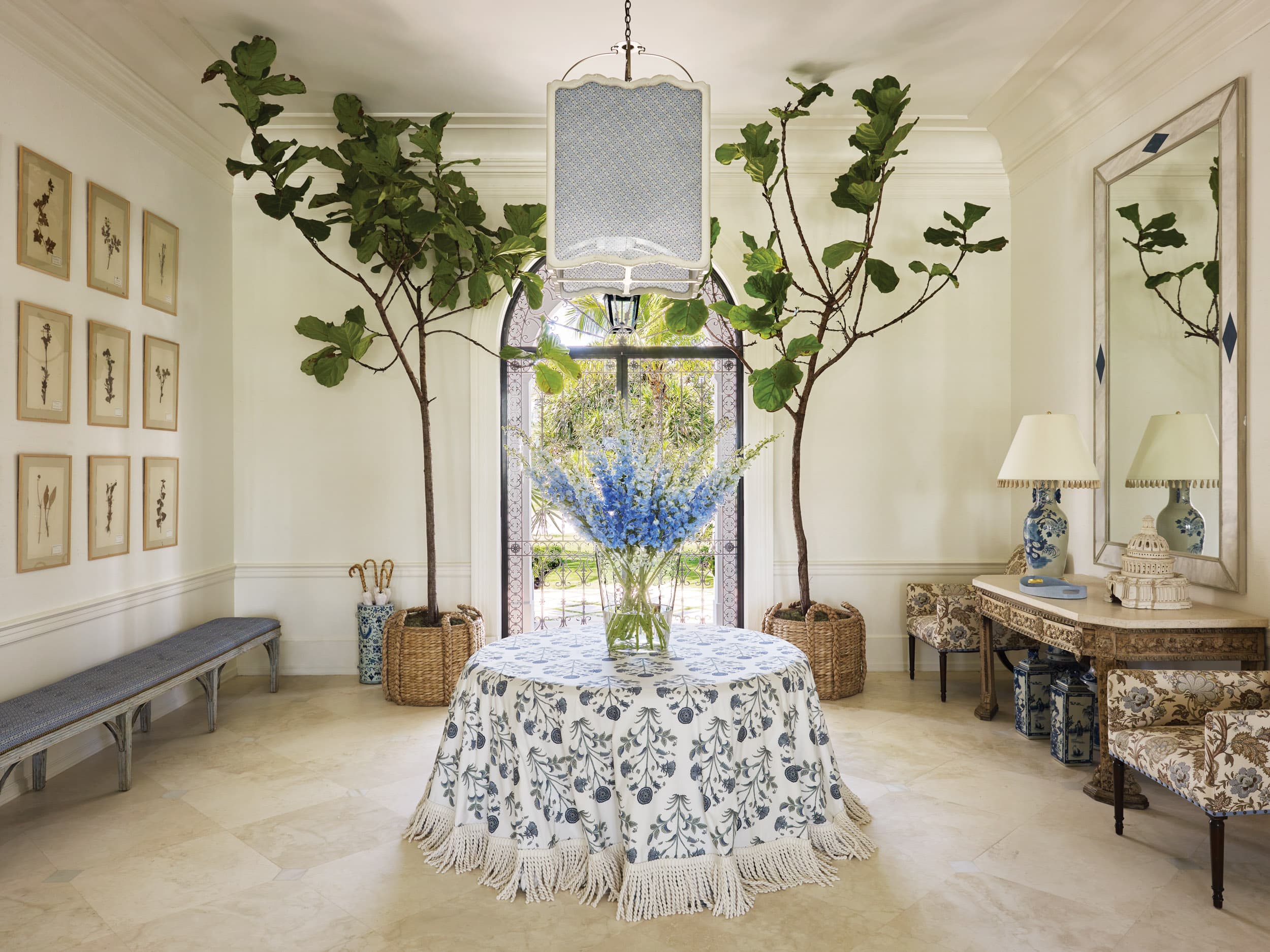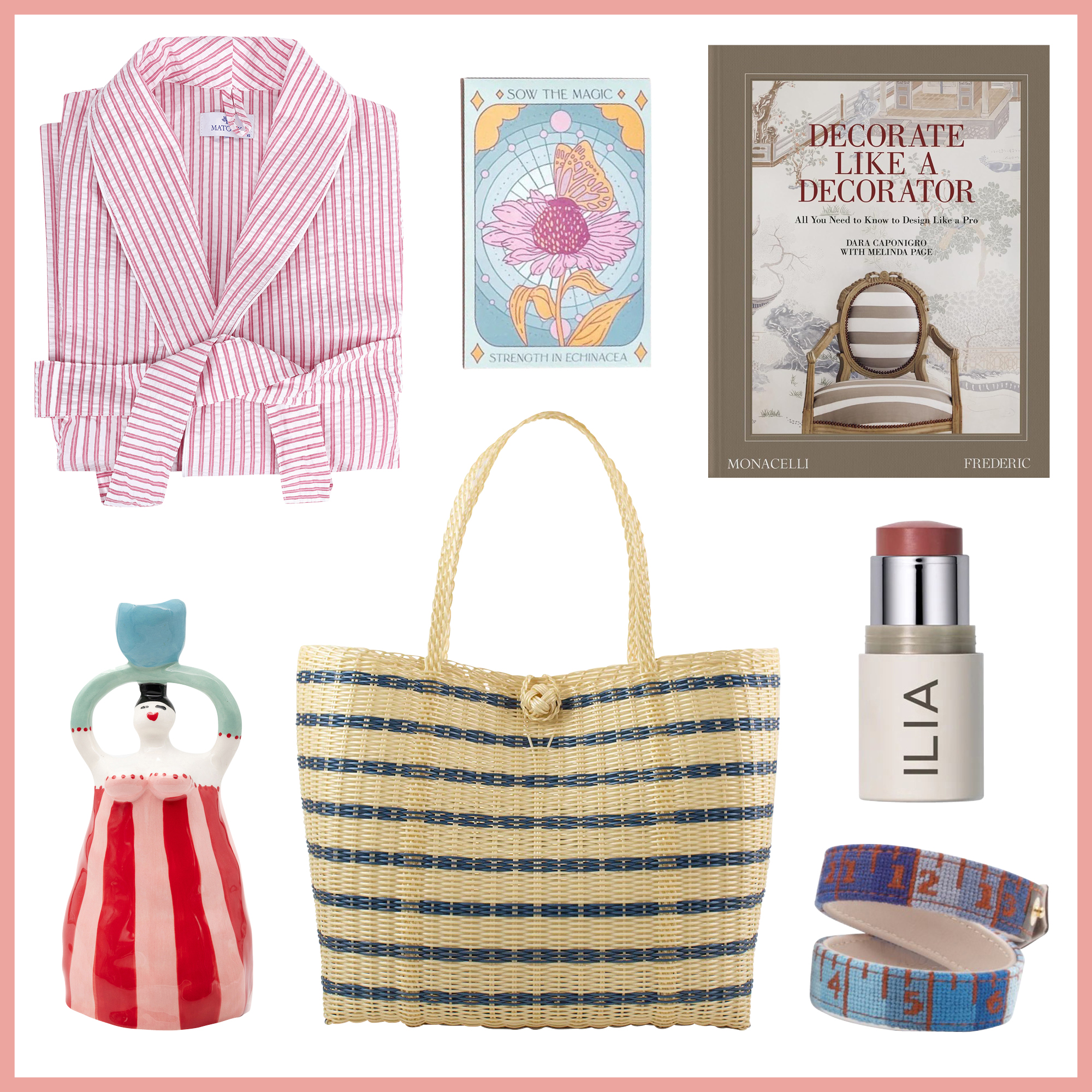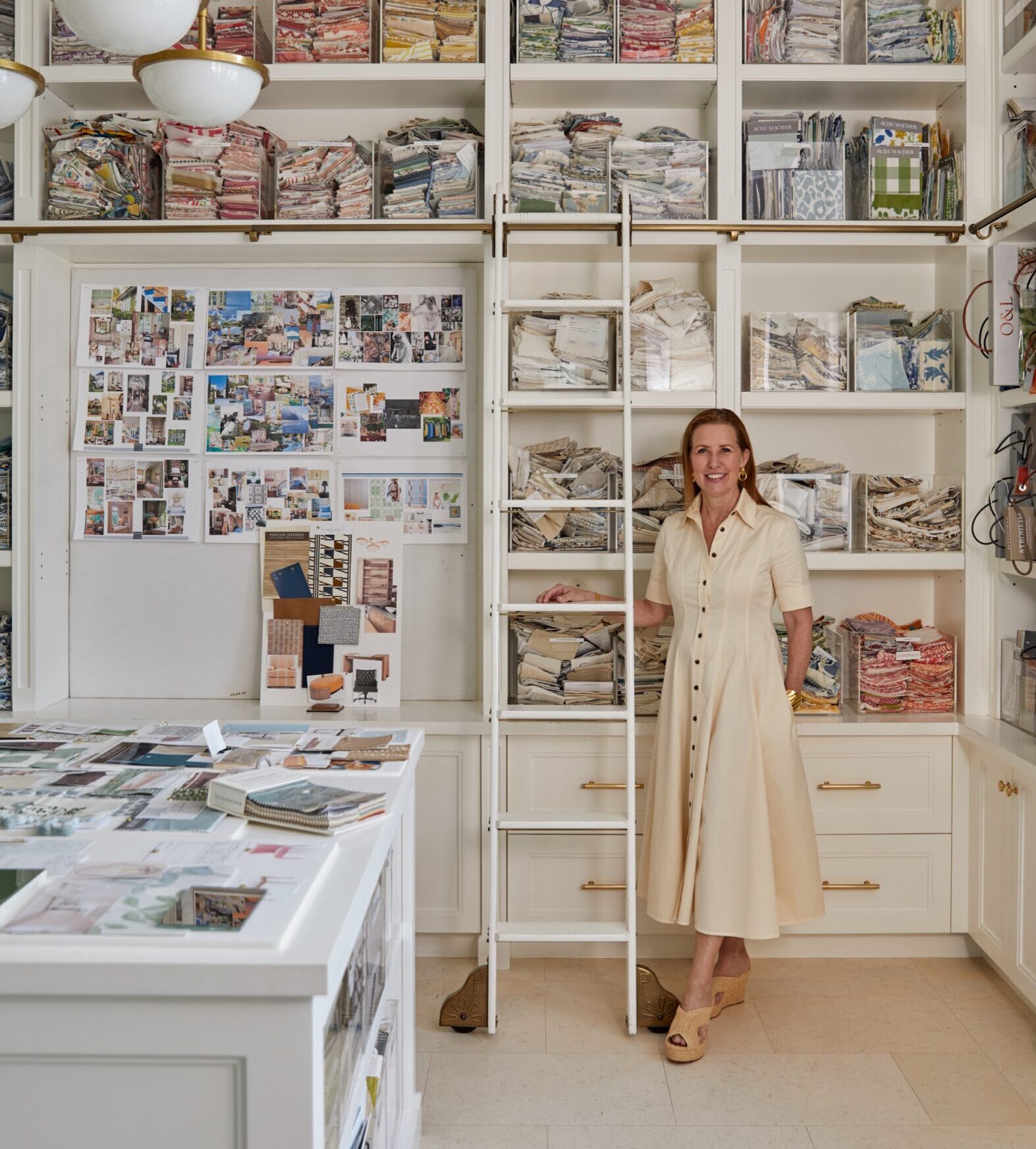
Benni Frowein doesn’t mince words when describing the state of his London apartment upon first setting eyes on it in 2021. “It was hideous,” says the German-born Frowein, who had spent the previous five years based in New York as president of Schumacher and had just been tapped to lead the company’s overseas expansion as CEO of Schumacher Europe & Middle East. “It had these low doors, the layout was confusing, each room had different base- boards and crown moldings, and there was plastic parquet everywhere.”
Four years later, there’s nary a sign of that original architectural calamity. In fact, the two-bedroom flat, located in a 19th-century terraced house in Chelsea, is a vision of considered coherence, where every object seems to be in conversation with its neighbor. Artful threads of color and texture and motif weave in and out rooms, sometimes instantly apparent as a bold burst, and other times only making themselves known with the subtlest of nods.
-

Broken Mountain by Jan Albers, purchased through van Horn Gallery in Düsseldorf, makes a showstopping statement against quiet white walls. The rug, commissioned by Frowein from Helder Johannes, is its own work of art: The design loosely outlines the seating arrangement, its colors a muted take on the apartment’s primary palette. Mirrors, Mithé Espelt.
FRANCESCO LAGNESE -

The Soriana sofa by Afra and Tobia Scarpa for Cassina, with pillows in sunny yellow Sophia Velvet by Schumacher, has sink-right-in vibes; Moon Shadow by Ferri Garcès, 2022, hangs above the fireplace
FRANCESCO LAGNESE
The transformation began with a structural overhaul: In order for the diminutive doorways to be enlarged and moved (“Not a single one was centered, which drove me crazy—I guess that’s my German sense of symmetry”), the walls needed to be heavily reinforced, so in went a total of 10 steel beams. With a more open flow established, Frowein embarked on a floor-to-ceiling rethinking of how each space could function. “I flipped the entire layout—no single room is used how it was before,” he says. The dining room was split into an entry hall and guest room, the kitchen became a spacious bath, and the living room was swapped with the primary bedroom. Extra-high baseboards—one of Frowein’s favorite devices for making a room feel more substantial—were installed throughout.

The dining room rug (also by Helder Johannes) was designed to mimic the shape of the custom Atelier Pendhapa table. A set of red Aldo Jacober chairs from the 1970s extends the rug’s linear motif. Over the fireplace, which offers a peek through to the living room, hangs Pablo Picasso’s The Lobster (1949). Curtains in Turkish Step fabric by David Kaihoi for Schumacher.
FRANCESCO LAGNESEAn impassioned collector (he cofounded the online art platform Objekti with his sister-in-law, designer Miriam Frowein, in 2021), Frowein designed the common areas as gallery-like settings, where clean white walls and pale herringbone floors set the stage for the main event. In the dining room, that would be the six-sided table designed by architects Antonin Hautefort and Ignatio Tenggara of Atelier Pendhapa, with its hand-carved solid oak base supporting a black lacquered tabletop that’s been inset with ceramic raku tiles in shades of ochre, tan, and cream, refracted and resected in Cubist fashion. (Pablo Picasso, whose culinary-themed still life hangs on the wall behind, would certainly approve.) Underneath, a custom rug by Frowein’s brother-in-law Helder Johannes loosely mirrors the table’s hexagonal shape and pattern, its red stripes appearing to explode from the one-dimensional plane of the floor via a set of Aldo Jacober’s Trieste chairs. “The idea was to create something convivial that would be as comfortable for two people as for eight,” says Frowein.

The small kitchen is an Op Art fantasy, with large-scale Binary panels by Porter Teleo for Schumacher on the walls and floor (the latter coated with several layers of varnish) and roman shades in Samsun Embroidery. Mirrored plinths below the cabinets help to visually expand the space.
FRANCESCO LAGNESEThe volume lowers a notch in the adjacent living room, where floor-to-ceiling yellow chintz curtains are softened by a layer of sheer woven fabric, and a more subdued Helder Johannes rug—this one in shades of butter, shell pink, and smoke—anchors the seating area. At least, that was Frowein’s initial intention: “It was supposed to be more muted than the dining room—until I bought the art piece,” he says, referring to a craggy wall sculpture by Jan Albers, spray-painted in a blue-to-coral gradient that seems to almost glow. “I like to have something in every room that doesn’t entirely fit, otherwise it’s too tame,” he explains. Even the radiator cover, versions of which can be found throughout the apartment, has an artful backstory: The arrangement of the cutouts mimics the glazed black tiles lining the floor of the entrance hall.
-

In the sun-drenched primary bath, a Lusso tub invites luxurious soaks. Above it hangs a Ramses Wissa Wassef tapestry that Frowein found in Cairo, Egypt. A custom cappuccino onyx vanity floats on the opposite wall. Stool, Atelier Pendhapa. Roman shade fabric, Maxwell by Schumacher. Sconce, Original BTC.
FRANCESCO LAGNESE -

Sleek built-in storage in the primary bedroom is upholstered in Schumacher’s Corsica fabric, with baseboards that slide out to reveal shoe storage; the tiled floor of the entry beyond was the inspiration for the geometric radiator covers.
FRANCESCO LAGNESE

A pair of Dieter Asmus paintings takes pride of place over the upholstered bed (by Patricia Urquiola for Cassina), which is dressed in a Hermès coverlet; chair, Nanna and Jørgen Ditzel for Getama; tables, Soho Home; pillows in V Step by Miles Redd and curtains in Lisboa Velvet, both Schumacher.
FRANCESCO LAGNESEGiven Frowein’s role at the forefront of a storied design house, it comes as no surprise that his home has become an ever-evolving showcase for its wares—often deployed in out-of-the-box fashion. “For me, it was important to show people that Schumacher can be contemporary by using fabrics and wallpapers in unexpected ways,” he explains. Take the kitchen, where the usual tiled surfaces are replaced by large-scale geometric wallpaper panels on the walls and floor (the latter protected by numerous coats of varnish); a miniaturized cousin of the motif reappears on embroidered roman shades. In the primary bedroom, a wall of built-in cabinets gets a luxurious upgrade with tight upholstery in Schumacher’s Corsica fabric, while in the guest room, overnight visitors can create their own private inner sanctum by drawing the alcove’s yellow velvet curtains.
The result, worlds away from the chaos that Frowein once walked into, speaks to its mastermind’s skill as curator, able to see both the overarching message and the individual pieces that comprise it with equal clarity. No brushstroke is superfluous; every move a strategic part of a larger game plan. “Basically, I wanted everything to fit perfectly without being obvious. It should be contemporary but also warm,” he says. “And I think that it is possible to achieve both.”
THIS ARTICLE ORIGINALLY APPEARED IN VOLUME 12 OF FREDERIC MAGAZINE. CLICK HERE TO SUBSCRIBE!





















